Surfaces and bodies of rotation: using the “virtual pottery wheel” in Wolfram | Alpha
- Transfer
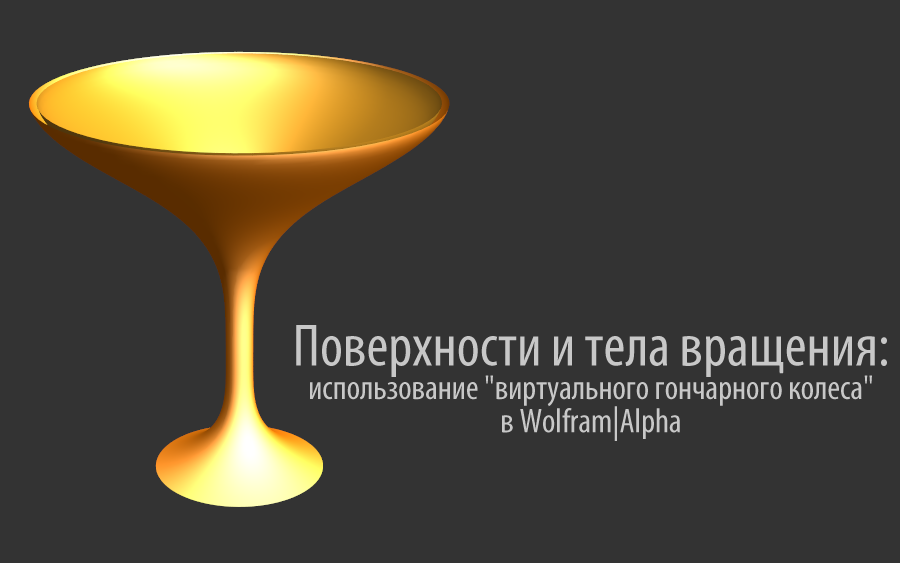
Translation of Peter Barendse's post " Surfaces and Solids of Revolution: Using Wolfram | Alpha's" Virtual Potter's Wheel " ".
The code in the article can be downloaded here . Many
thanks to Kirill Guzenko. KirillGuzenko for help in translating and preparing the publication.
Even before the advent of modern 3D printing technology, we had the opportunity to create objects of almost any shape, and the only limitations for mankind were associated only with the accuracy that we can provide. And on the way to overcoming these limitations, a variety of devices have been developed that are capable of producing products of very complex shapes; the culmination of this process (before the advent of 3D printers) was the emergence of CNC machines and a large number of degrees of freedom:
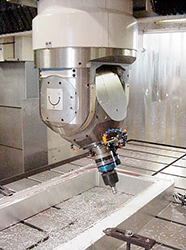
Historically, one of the first such devices was, perhaps, a potter's wheel, with which we had the opportunity to create very accurate axisymmetric products of any profile. I still perceive this as magic, looking at how the potter makes a curve with his own hands; how this curve sets the shape for the entire vase through the rotation of the wheel: A simple generalization of the potter's wheel is a lathe. In essence, it is a potter's wheel for wood or metal. Lathes look like pottery wheels, but the workpiece is horizontal and some sharp cutting tool forms a curve. The cutting tool can also be attached to the guide with a certain contour, as a result of which it is possible to produce products of the same shape.
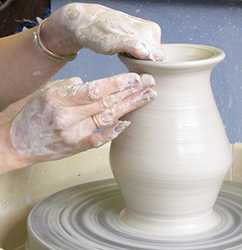
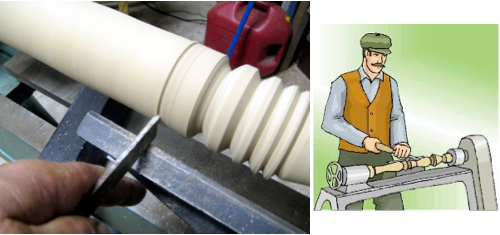
A machine tool and a potter's wheel can produce a certain class of bodies, which are called bodies of revolution. The surface of a body of revolution is the surface of rotation.
From the point of view of mathematics, the surface of rotation is the result of the rotation of some curve defined on the plane around the axis (the axis must lie on the same plane). The obtained surface of rotation is located in three-dimensional space. The body of revolution is the result of rotation of a two-dimensional region around an axis.
Surfaces and bodies of revolution are usually studied in the second semester of the course of mathematical analysis - as one of the areas of application of integration. I remember that this topic seemed to me very useful educational material, because this is the next most intuitive example of the concept of integration after the area under the graph, in which, however, a single integral is used.
Together with 3D printing and Wolfram Language, students have the opportunity to add visual representation and design experience to the theory and mathematical intuition that they already have. And, as will be shown later, it is not at all necessary to know something from the field of programming or to be able to make calculations in order to use the “virtual potter's wheel” in Wolfram | Alpha! And obeying the call of the potter’s wheel, let's make some cup!
After some study of the various functions in Wolfram | Alpha (well, I admit, here I used Wolfram Language to be able to interactively control the shape of the curve) I found an interesting candidate for the role of the curve for our cup - it should make something like a cocktail glass:

Now I I can just change the plot (build) to revolve (rotate), and Wolfram | Alpha will tell me about my glass and show its image:

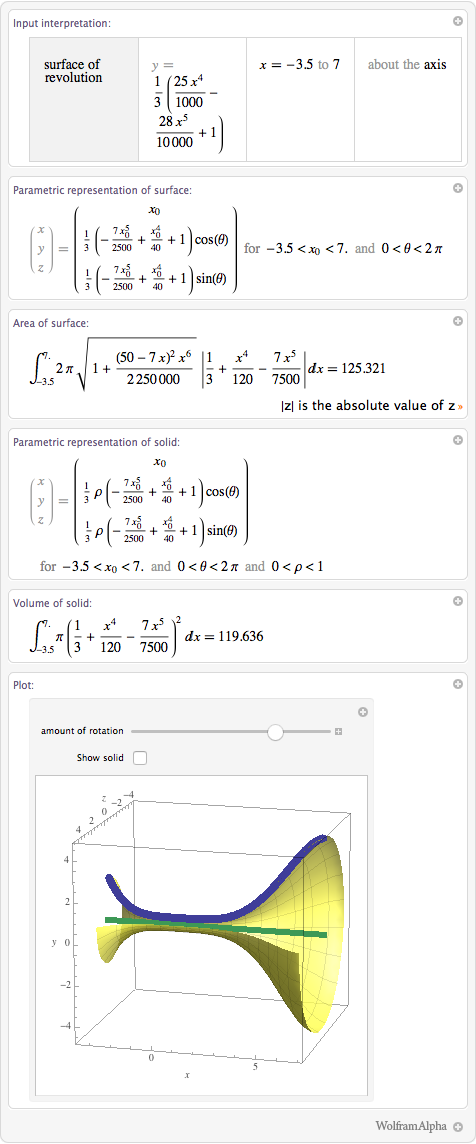
In addition to the equations that determine the body and surface, I get the value of the volume inside the body and the area of its surface tee. Volume is about 120 - this means that if we used centimeters as the unit of measurement, then my glass will contain 120 ml (120 cc).
However, this volume also includes what is enclosed in the leg of the glass and at its base. Part of this space must be reserved for glass (or other material from which the glass will be made). Therefore, let's add an internal curve - I set it by shifting the original curve 1/6 down and taking it from 3 to 7:
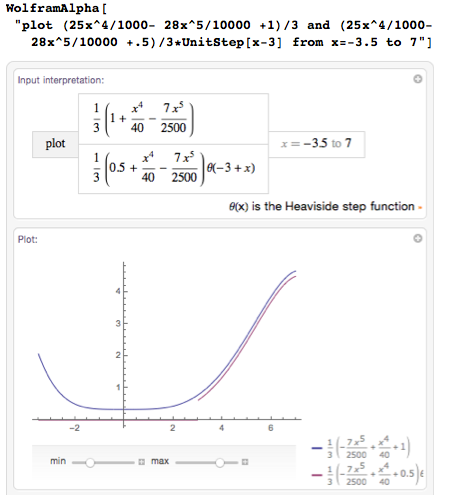
Now I could either print this graph to use it as a template on my lathe (if I was like that), or continue to work with the "virtual pottery wheel":

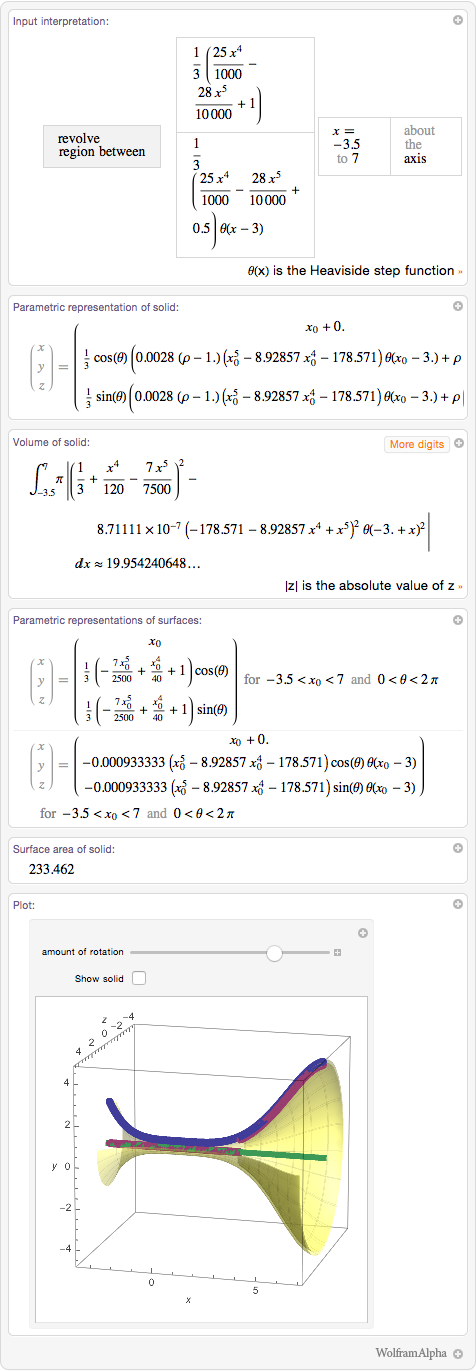
Now I know how much material I need to produce one glass - about 20 cc, that is, we have about 100 ml of space left for the drink to be placed in the glass. You can also calculate how much paint we need to spend to color the glass. Its surface area is approximately 233 cm², and on cans of paint it is usually indicated on what area it is enough to paint.
To print this cup through the Shapeways website , I used the simplified method that Vitaly Kaurov wrote about last year.
Although I can build any surface of revolution in Wolfram Language using RevolutionPlot3D , instead I just copied the “Parametric representation of surfaces” and used it inParametricPlot3D (and if you want to implement this through Wolfram | Alpha, then copy “Text input to Wolfram Language” from “Parametric representation of surfaces” - part of Wolfram | Alpha output). It turned out that I needed to change something in order to meet the Shapeways requirements: firstly, I had to convert centimeters to millimeters, which I achieved by increasing all sizes by 10 times (using ScalingTransform ), and secondly I needed to set 1.6 mm thick, which I implemented using PlotStyle :
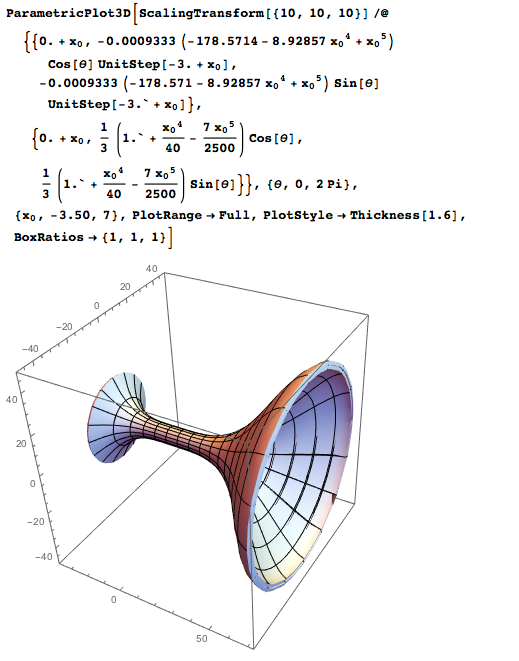
The only thing that was needed after that was to upload the cup in .stl format to their website:

And ... voila! Here is an image of a finished glass embodied in plastic (it all cost $ 23):

In Wolfram | Alpha, you can create a wide variety of surfaces and bodies of revolution using various functions, axes and rotation parameters:

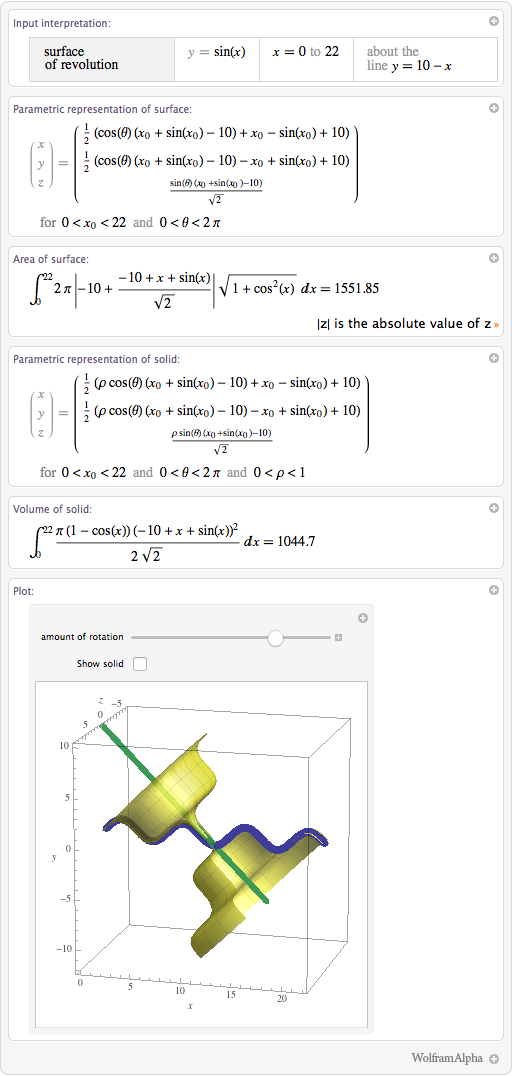
I can even rotate the infinitely long part of the curve, which leads us to a mathematical “paradox” called Gabriel’s horns (or Torricelli pipe):
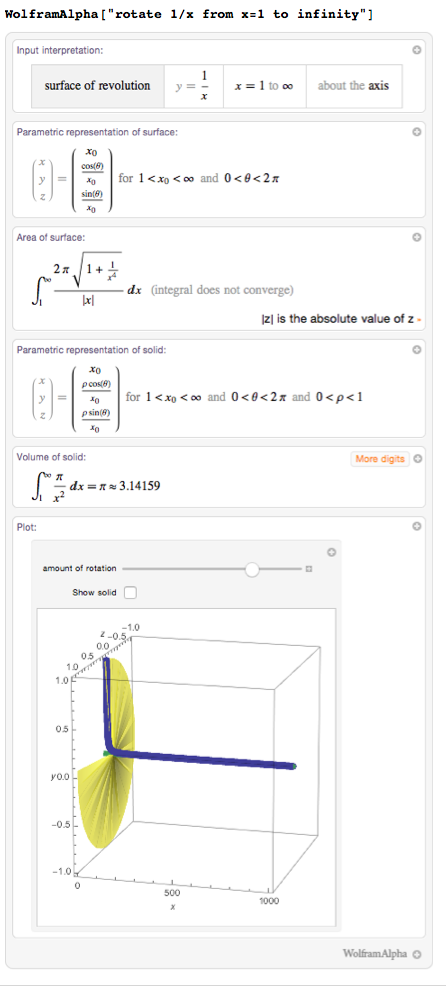
Wolfram | Alpha reports that the resulting volume is π, but the surface area is infinite! It seems from this that I can fill the horn with a finite amount of paint, but this amount should not be enough to cover the entire inner surface - some kind of absurdity turns out. Of course, the paint layer is actually not two-dimensional, and at some point the tube will narrow so much that no molecule can pass through it anymore, so from the point of view of physics we have no paradox.
Soon, Wolfram | Alpha Pro users will be able to access step-by-step solutions to the problem of finding the area and volume of the surface of revolution, showing how you can calculate the individual components of the surface or volume and combine them together. I would be glad to hear from you ideas on how else to use this technique.
And now, holding this glass in my hands now (partly because I did not take into account its tendency to tip over), I propose a toast: for creativity and for those tools that allow us to realize our ideas. We will be!
